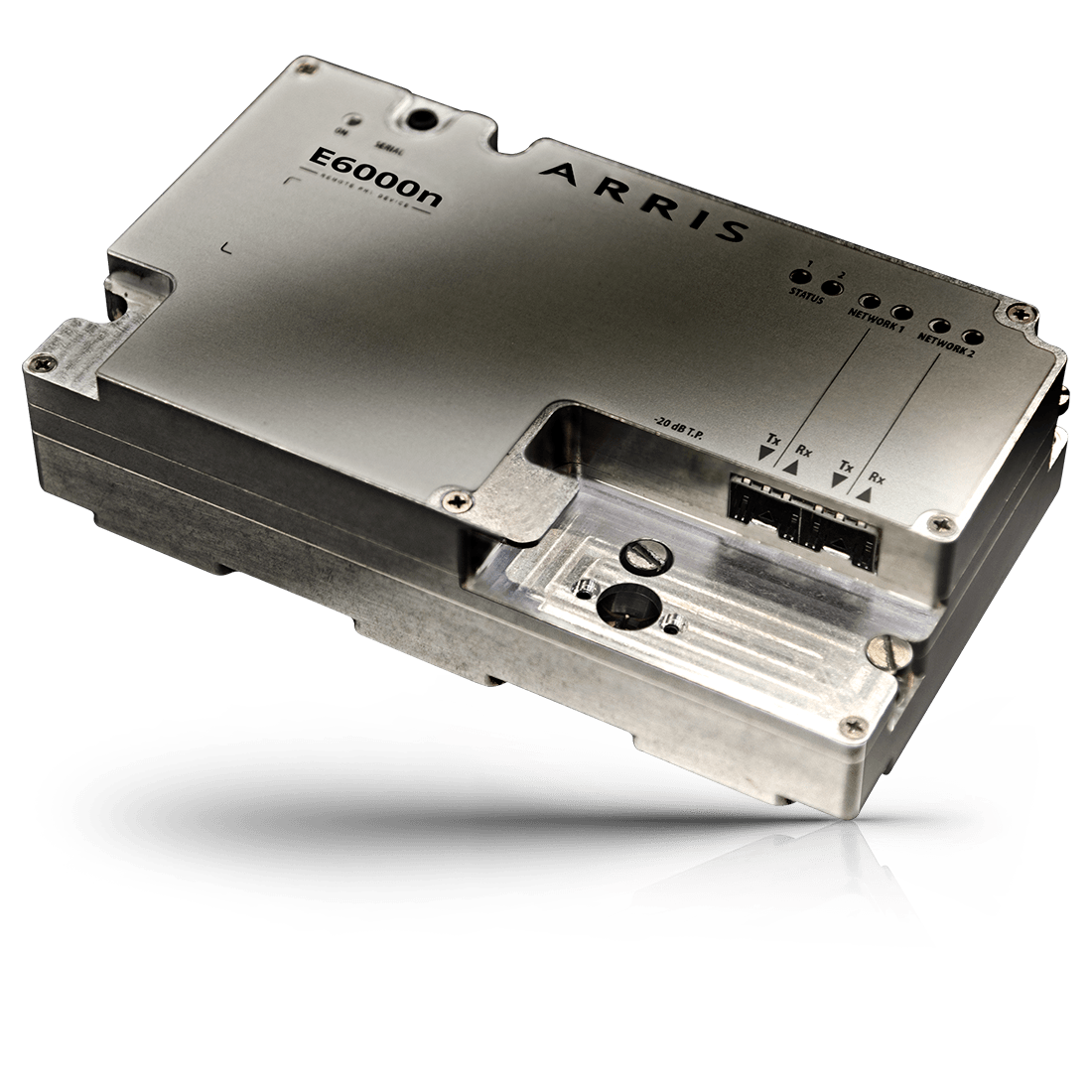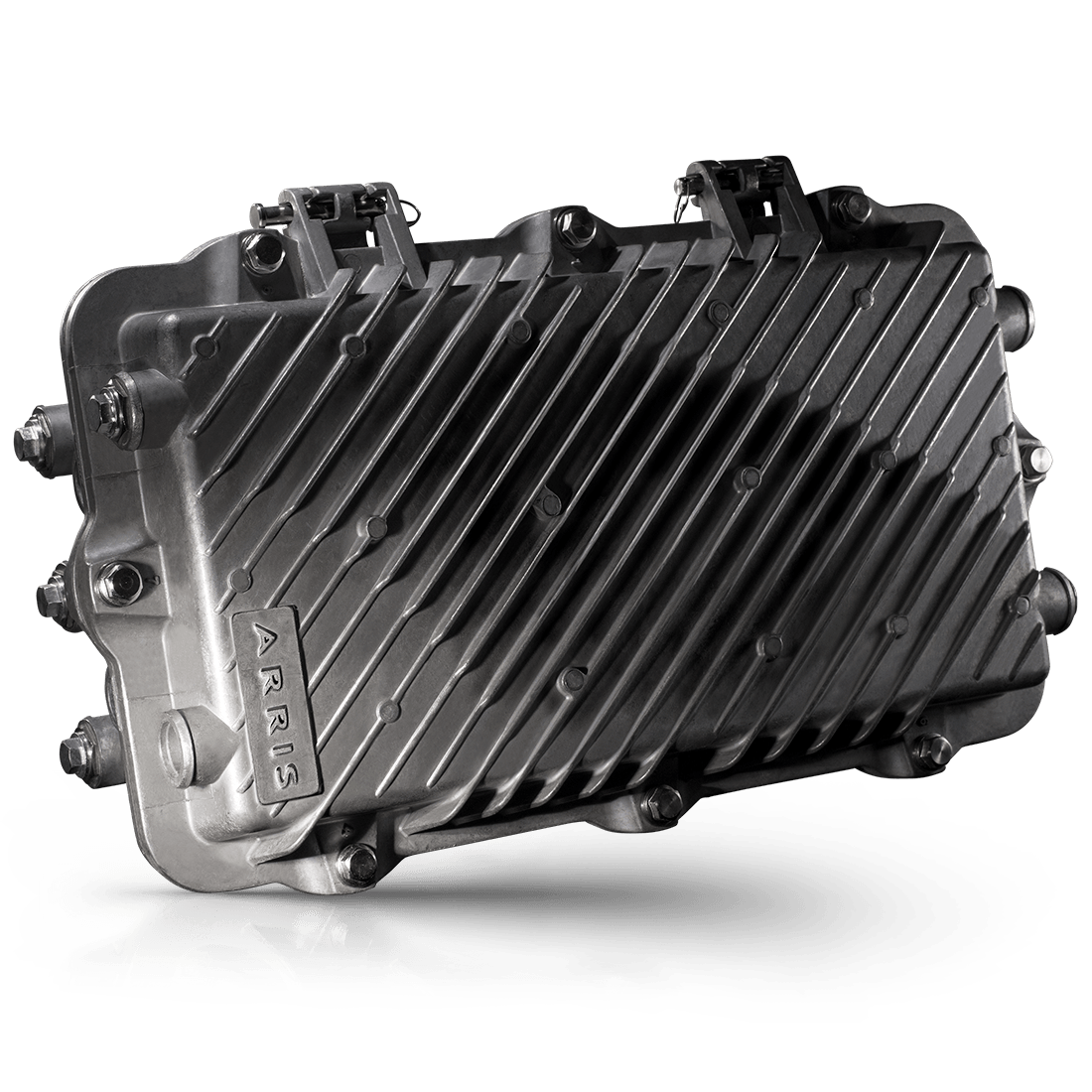


Arris Remote-PHY solution features NC2000 optical node and E6000N R-PHY module
As the newest step in the continuing evolution towards an all-digital headend, Distributed Access Architecture (DAA) extends the digital portion of the headend/hub domain out to the fiber optic node and places the digital/RF interface at the optical/coax boundary. This strategic move offers many potential benefits, including increased bandwidth capacity, improved fiber efficiencies (wavelengths and distance), simplified plant operations with digital optics, decreased loads on facility space and power systems, and directional alignment with NFV/SDN/FTTx systems of the future.
ARRIS provides both the CCAP Core and Remote PHY Device (RPD) defined in the CableLabs® Modular Headend Architecture (MHAv2). In this approach, the PHY layer is moved from the CCAP into a node or remote shelf, but the MAC processing, provisioning, and monitoring functions remain in the headend.
The E6000® CCAP Core runs on the Gen 2 E6000 hardware platform (E6000 Chassis, RSM-2, DCAM-2, and UCAM-2). The RPDs are add-in modules for existing ARRIS nodes. ARRIS supports three RPD form factors: E6000n RPD for the OM6000 Fiber Deep node, E6000n RPD for the NC4000 and NC2000 nodes, and E6000n RPD for Remote PHY Shelf.
Generating RF signals in the fiber optic node rather than in the headend can provide a cost-effective tool for:
- Improving plant signal quality
- Improving fiber utilization and reach
- Improving service group density in the headend
- Reducing space and power consumption in the headend
- Simplifying plant maintenance by using digital optics
- Reducing transmission costs by leveraging data center economies of scale for Ethernet switches and optics
Applications for DAA include:
- Plant upgrade for DOCSIS 3.1 support
- Hub consolidation
- Enabling Fiber Deep deployment without requiring headend expansion
- Utilizing DWDM optics for long distance links
- Supporting data services in small hubs
- Simplifying logistics for changing US/DS split or top-end frequencies
Find out more here.
Back ››


